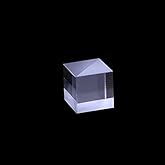Photography is an intricate blend of art and science, requiring not only technical skill but also a keen eye for detail and creativity. One of the most intriguing settings for photography is the glass cube, a space that offers unique challenges and opportunities. This article delves into the behind-the-scenes process of photographing in a glass cube, exploring the techniques, considerations, and creative possibilities that come with this distinctive setup.
Understanding the Glass Cube Environment
A glass cube is essentially a transparent enclosure that can serve various purposes, from art installations to product showcases. The transparency of the glass creates a dynamic environment where light plays a crucial role in how subjects are perceived. Here are some key elements that define the glass cube environment:
- Light Reflection and Refraction: Glass reflects and refracts light, which can create unique visual effects but also complicates exposure settings.
- Background Control: The see-through nature of the cube allows for various background options, but it can also introduce distractions that need to be managed.
- Spatial Dynamics: The enclosed space can create a sense of intimacy, making it ideal for portrait photography or small product displays.
Preparation: Setting the Stage for Success

Before the camera clicks, extensive preparation is necessary to ensure a successful shoot. Here’s how to set the stage for photographing in a glass cube:
1. Selecting the Right Gear

Choosing the appropriate camera and lenses is crucial when working in a glass cube. Here are some recommendations:
- Camera Body: A camera with manual settings allows for better control over exposure, which is essential in a reflective environment.
- Lenses: Wide-angle lenses can capture more of the space, while macro lenses are perfect for showcasing intricate details of products.
- Tripod: A sturdy tripod can help stabilize the camera, particularly in low-light situations.
2. Lighting Techniques
Lighting is one of the most critical aspects of photography in a glass cube. Here are some techniques to consider:
- Natural Light: Utilize natural light to create soft, diffused illumination. Early morning or late afternoon light often works best.
- Artificial Lighting: Use softbox lights or LED panels to minimize harsh shadows and control the intensity of light.
- Reflectors: Incorporate reflectors to bounce light into shadowed areas, enhancing the overall exposure.
Execution: Capturing the Perfect Shot

Once the setup is complete, it’s time to capture stunning images. Here are the steps to consider during the shooting process:
1. Composition and Framing

Effective composition is vital in photography. In a glass cube, consider the following:
- Rule of Thirds: Position important elements along the lines or intersections of a third grid to create a balanced image.
- Leading Lines: Use lines within the cube to guide the viewer’s eye toward the focal point.
- Negative Space: Incorporate negative space to emphasize the subject and prevent the image from feeling cluttered.
2. Managing Reflections

Reflections can be both a challenge and an opportunity in glass cube photography. Here’s how to manage them:
- Polarizing Filters: Consider using a polarizing filter to reduce glare and enhance color saturation.
- Angle Adjustment: Adjust the shooting angle to minimize unwanted reflections from the environment.
- Creative Use of Reflections: Embrace reflections as part of the composition; they can add depth and intrigue to the image.
Post-Production: Enhancing the Final Image
After the shoot, post-production plays a significant role in refining the final images. Here are some essential editing tips:
- Color Correction: Adjust colors to ensure they appear natural and vibrant, particularly if the glass altered hues.
- Sharpening: Enhance details through selective sharpening, making sure to avoid overdoing it to maintain a natural look.
- Crop and Straighten: Crop the image to improve composition and straighten any tilted shots to enhance professionalism.
Case Studies: Successful Glass Cube Photography Projects
Several photographers have successfully utilized glass cubes to create stunning images, showcasing the versatility of this unique environment. Here are a couple of notable examples:
1. Product Launches
Brands often use glass cubes for product launches due to their modern aesthetic. For instance, a tech company might showcase a new gadget in a glass cube, utilizing strategic lighting and reflections to highlight design features. The resulting images are not only visually appealing but also convey the brand’s innovative spirit.
2. Art Installations
Artists have increasingly turned to glass cubes to create immersive installations. By photographing these spaces, photographers can capture the interplay of light and shadow, as well as the viewer’s interaction with the art. Such projects often emphasize the emotional resonance of the artwork, inviting viewers to engage with the images on a deeper level.
Statistics and Trends in Glass Cube Photography

The rise of social media has significantly influenced photography trends, including those involving glass cubes. Here are some statistics that underline these trends:
- Increased Engagement: Posts featuring glass cube photography on platforms like Instagram tend to have a 30% higher engagement rate compared to standard product photos.
- Brand Visibility: Brands that utilize unique photography styles, such as glass cube setups, report a 20% increase in visibility and brand recall.
- Consumer Preference: Studies show that 65% of consumers are more likely to purchase a product if they can view it in an appealing and innovative setting.
The process of photographing in a glass cube offers a unique blend of creativity, technical skill, and artistic vision. From understanding the environment and preparing the right gear to capturing the perfect shot and refining the final images, each step contributes to the overall success of the project. By embracing the challenges of reflections, light, and composition, photographers can create compelling images that captivate audiences and elevate the subjects being showcased.
As trends continue to evolve, the glass cube remains a powerful tool in the photographer’s arsenal, enabling innovative storytelling and engagement. Whether for product launches, art installations, or personal projects, the potential for stunning visuals is limitless. Embrace the glass cube, and let your creativity shine through its transparent walls.